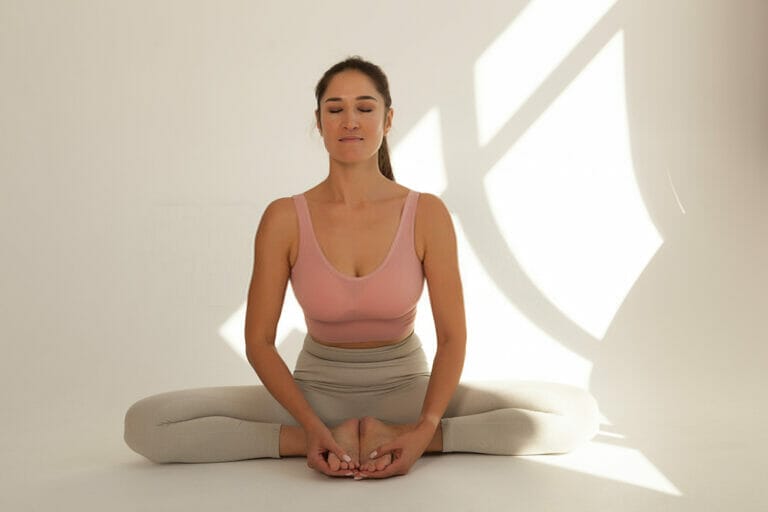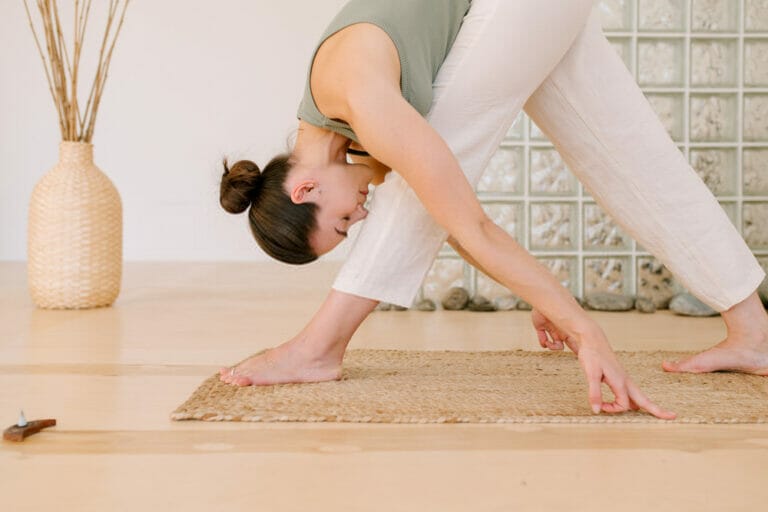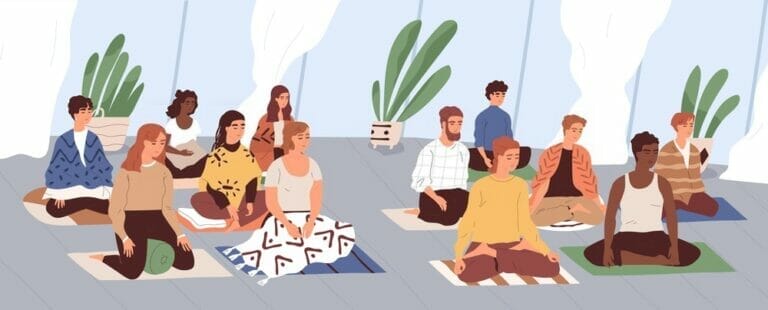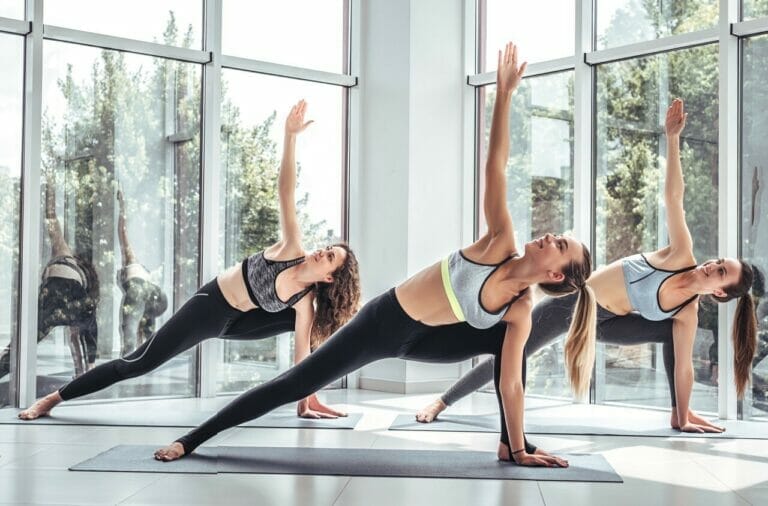All About Yoga – Its History, Types, Uses And Many More
“Yoga is the royal road to perfect health.” It is the oldest and one of the best-known exercise systems in the world.
It is a combination of physical postures (asanas), deep breathing, and meditation. It tones and tightens your body and calms your mind.
Regular practice of asana leads to a balanced, calm, and healthy mind and body. Recent studies have shown that yoga is good for your physical health and positively affects your mental health.
It improves your concentration and focus, increases your memory power, and lowers your stress levels. It also helps you achieve a state of total “aliveness” or “non-duality.”
This article will share everything you need to know about yoga, its uses, and its types!
Let’s begin with the definition of yoga.
Yoga – The meaning of the word

The meaning of the word ‘yoga’ comes from two Sanskrit words: yuj, which means joining or yoking, and ga, which means action or doing. Thus yoga means “joining (or doing) the action (or doing the actions).”
It is a way of life, a lifestyle that combines knowledge and devotion.
Yoga is the union of the mind, body, and soul in a single unity. It can be called an overall transformation from the physical to the spiritual level.
It also implies that it makes you live forever in balance with yourself and others around you.
Yoga, as a system of physical and spiritual disciplines, is quite old. Though it has been practised in the Indian subcontinent for thousands of years, the twentieth century is the era of its most widespread recognition and development.
Its origins can be traced to prehistoric days. In India, it is regarded as a part of Holy Tradition and is rooted in Vedic philosophy.
Yoga consists of three essential elements: Asana (i.e., body postures), Pranayama (i.e., deep breathing exercises), and Pratyahara (i.e., control of the senses).
Yoga: Its history
The most ancient text, which makes mention of the practice of yoga, is the Rigveda. According to a legend, Lord Shiva, who meditated in a Himalayan cave for thousands of years, revealed many ancient yoga texts.
Pre-Classical Yoga
Over 5,000 years ago, the Indus-Sarasvati civilization in Northern India formed the foundations of yoga. Yoga was initially referenced in the Rig Veda.
The Brahmans and Rishis gradually refined and perfected yoga, documenting their practices and ideas in the Upanishads, a massive work spanning over 200 scriptures.
The Bhagavad-Gîtâ, written approximately 500 B.C.E., is the most well-known of the Yogic scriptures.
Classical Yoga
Patanjali’s Yoga-Sûtras, the earliest systematic presentation of yoga, defines the Classical period. This treatise, written somewhere in the second century, explains the way of RAJA YOGA, sometimes known as “classical yoga.”
Patanjali divided yoga into an "eight-limbed path" that outlined the methods and stages to achieving enlightenment.
Patanjali is widely referred to as the “Father of Yoga,” and his Yoga-Sûtras continue to influence most modern yoga systems profoundly.
Post-Classical Yoga
Yoga gurus developed methods to revitalize the body and extend life a few centuries after Patanjali.

They accepted the body as a means of achieving enlightenment while rejecting the traditional Vedic teachings.
Instead, they found Tantra Yoga, an extreme kind of yoga that uses radical procedures to cleanse the body and mind.
This research of physical-spiritual linkages and body-centred practices led to the formation of Hatha Yoga.
Modern Period
Yoga came to the west in the late 1800s. Swami Vivekananda, the first of the masters, stunned the crowd at a yoga lecture in Chicago in 1897. He was a Ramakrishna Paramhansa follower from Kolkata, India.
Swami Vivekananda was a sannyasi (monk) who portrayed the actual picture of yoga science and persuaded western intellectuals of its value for society.
His talks on the Bhagavad Gita, Karma Yoga, Ashtanga Yoga, Bhakti Yoga, and Jnana Yoga are true inspirations for anyone who does yoga.
In addition, he launched the Ramkrishna Mission, which strives to preserve yoga's pure spiritual roots while uplifting society.
Patanjali Yoga Sutras
Patanjali’s Yoga Sutras are a set of 195 Sanskrit sutras on yoga philosophy and practice. The Yoga Sutra was composed by the Indian scholar Patanjali between 500 BCE and 400 CE, who consolidated and arranged knowledge about yoga from far older traditions.
Patanjali's Yoga Sutra was the most widely translated ancient Indian work in the medieval era, translated into over forty Indian languages.
There are four chapters of the Yoga Sutras, which are as follows:
Samadhi pada: It defines yoga but helps individuals achieve Samadhi or self-realization.
Sadhana pada: It describes the eight steps that you must follow to progress spiritually. The chapter is for the average individual. It’s arguably the most essential of all the chapters.
It encompasses ethical-moral behaviour, asana, pranayama, sensory mastery, concentration, meditation, and self-realization, all of which are completed in this order.
Vibhu pada: Describes and warns against the temptations of the eight siddhis, or supernatural powers, which a yogi can attain at higher stages of spiritual development.
Kaivalya pada: It describes how to live in the world detachedly, free of the effects of the three Gunas (sattva, rajas, and tamas), or energy qualities.
These chapters focus on a person’s real progress in action, thought, and speech. Patanjali’s Yoga Sutras have become one of the most cited sources of yogic wisdom because they give the ultimate instruction manual for yoga and spiritual development.
Ashtanga yoga
Ashtanga Yoga system is the eight limbs of yoga that is a self-transformation process leading to the ultimate state of joy.

The Sutras of Patanjali explain this system or process to guide living a tranquil and purposeful life.
But, if you’re a yoga teacher or a yoga student, you’ve probably performed elements of this route without even recognizing it!
The eight limbs are:
- Yama (moral restraints) – controls unethical behaviour and breaks down negative habits
- Niyama (ethical standards) – develops the practitioner’s character and strengthens the mind
- Asana (postures or physical exercises) – stretches and strengthens the body and focuses the mind
- Pranayama (breathing control) – controls the mind and establishes a balance between physical and spiritual energy
- Pratyahara (sense control) – cultivates mindfulness over external stimuli
- Dharana (concentration/focus) – develops internal power and clarity
- Dhyana (meditation) – develops inner peace and stillness
- Samadhi (consciousness of being in the present moment, integrated life experience, self-realization, pure bliss) – connects the practitioner to the divine source of all wisdom, knowledge, love, joy, peace, and abundance
A person who has completed these eight stages of development will have the full support of the universe around them. The practise of yoga helps you on your journey to each of these stages.
Yoga Scholars
Let us look at a few of the most prominent scholars in yoga history.
- Shri Swami Sivananda – Swami Sivananda was born on September 8, 1887, as Kuppuswamy in Pattamadai, Tamil Nadu. He was in charge of spreading the concept of Yoga and Vedanta throughout India and the rest of the world.
He also founded the Divine Life Society and is the author of over 200 works on Yoga, Vedanta, and other topics.
- B.K.S. Iyengar – Born in 1918 in Bellur, Karnataka, India, B.K.S. Iyengar is a Yoga teacher and author who taught students worldwide.
He taught how to transform their bodies and minds with yoga and tantra while uncovering his spiritual evolution through and devotion to his guru, Shri Tirumalai Krishnamacharya.
- Patanjali – The author of the Yoga Sutras, Patanjali was a sage among sages. Born in Bihar or Magadha, modern-day northern India, Patanjali is credited as the “Founder of Indian Philosophy” and “Founder of Yoga.”
The Yoga Sutras were his collected teachings. He also wrote the Mahabhashya collected from his written works from 500 BCE to 500 CE.
- Tirumalai Krishnamacharya – Tirumalai Krishnamacharya is known as the Father of Modern Yoga. Born in 1888, in the Andhra Pradesh region of South India, Tirumalai’s yoga teachings are still being taught today around the world.
His students included B.K.S. Iyengar, Indra Devi, Pattabhi Jois, and T.K.V. Desikachar. His most well-known student was K. Pattabhi Jois, who taught Ashtanga yoga.
- Paramahansa Yogananda – Paramahansa Yogananda was born on February 13, 1893, in the village of Gorakhpur, India. He was the author of ‘Autobiography of a Yogi,’ perhaps the best-known book on yoga meditation.
He received teachings from his guru, Lahiri Mahasaya, and after a brief time as a monk, he later took to yoga meditation. In 1920 he became a student of Swami Muktananda and later went on to teach many others.
- Swami Rama – Swami Rama was born in 1924 in India. He is a master of yoga and meditation and has been teaching his students for over forty years.
When Swami Rama was only four years old, he left his home and searched for teachers to help him spiritually.
As a result, he studied under several highly revered saints, including the renowned Naga Baba of Arunachala.
- K Pattabhi Jois – Pattabhi Jois was born in 1915 and began practising yoga as a child under his grandfather, a yogi who lived in the south of India.
He later went on to study with Tirumalai Krishnamacharya, who was called the Father of Modern Yoga.
He drew together much of what had been taught by other yoga masters and organized it into a system that could be spread to a broad audience.
Pattabhi Jois also went on to teach ashtanga yoga, which is still practised today around the world.
Yoga Uses
We will not take a look at how yoga helps in your everyday life.
For health
Yoga has been used for thousands of years to help people manage their health and wellbeing. Although we know that yoga is good for the body and mind, we don’t fully understand its benefits.
So let’s see how it helps improve our health!
- It improves our immune system – It has been discovered that yoga helps to reduce stress. When we become stressed out, our immune system is weakened.
In addition, yogic breathing techniques help the body fight against various diseases.
- Improves Heart Health – This is proved by a recent study, where researchers compared the effects of regular meditation and yoga on the heart health of 1,300 middle-aged men and women.
The study results revealed that both activities help prevent high blood pressure and help to reduce the possibility of heart disease later in life.
- Improves Brain Functioning – It helps improve your cognitive functioning and your ability to focus and learn new things. It also helps fight fatigue, build muscle strength and reduce appetite.
- Aids in Asthma – A study at the University of California found that kids who practise yoga have a lower rate of asthma.
- Treats Chronic Back Pain – A study published in the Journal of Alternative Medicine found that yoga reduces back pain. It occurs because it strengthens your core, which improves posture and balance, reducing strain on the lower back.
Yoga can also help your mental wellbeing by allowing you to create a sense of calmness and control over your thoughts.
It helps you to be more aware of yourself. The practise of yoga has been found to bring about significant effects on overall health and wellbeing.
For Spirituality & Meditation
Yoga teaches you how to improve awareness of your own body, mind and senses. It also helps you to be able to use all of these senses properly to live a healthy and positive life.
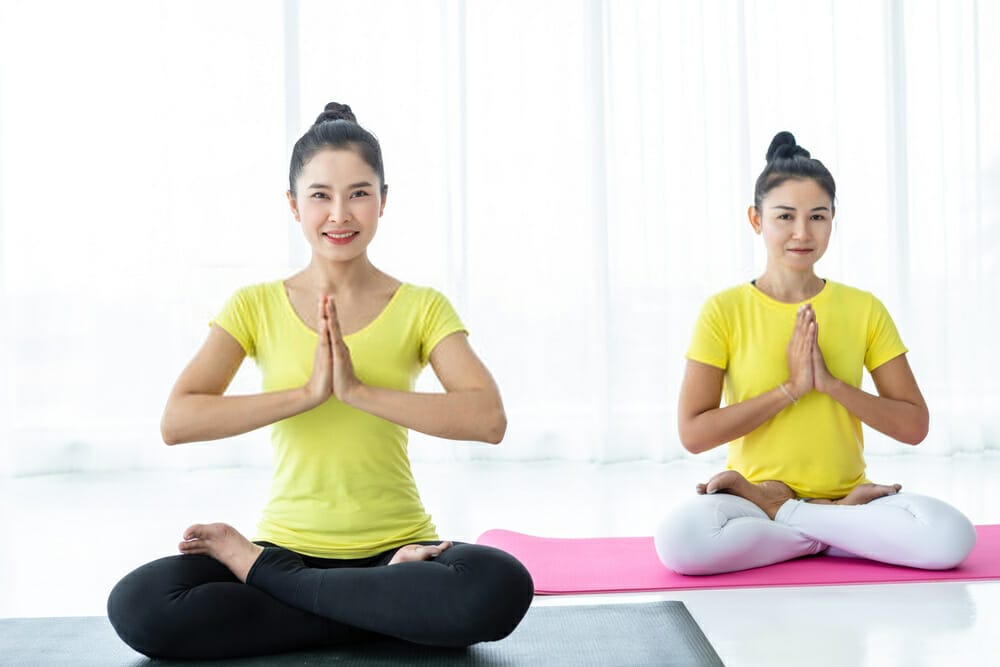
- It improves Attention – Yoga improves your attention span by increasing concentration, allowing you to focus on what you’re doing at any given time.
- Meditates the Mind – Yoga has the power to calm the mind. Research has shown that the practice of meditation has been found to help improve attention, but it can also help you with movement disorders such as Parkinson’s disease.
- Aids in Addiction – Yoga helps treat addiction because it improves habits by activating a lesser-known part of the brain involved in motivation and willpower, which means resisting drugs or alcohol.
- It Makes You More Inspired and Creative – We have already discussed how it improves the creative side of your brain. Yoga can help you to be more inspired in art, dance, music, poetry and writing.
- It boosts confidence – When you feel at peace with yourself, there is no need to be jealous of others. Yoga helps people in handling more positive about themselves by boosting confidence.
- It helps fight depression – A study published in the Journal of Alternative Medicine found that yoga reduced depression in patients recovering from surgery or cancer. In addition, the practice of yoga can help you to feel relaxed, happy and peaceful.
For Fitness
Yoga is a great way to be fit and healthy. It can also help you improve your posture and tone up your muscles at the same time.
In addition, yoga enables you to change your perspective about your body to be more optimistic about what you see in the mirror.
- Aids in Weight Loss – It has been found that practising yoga every day can lead to weight loss by improving metabolism. Yoga enhances body functioning by increasing the inner body temperature, which promotes digestion and more robust metabolism.
- Improves Posture – Yoga can help you correct your posture and help you to be more aware of the way you hold yourself. It is said that when your body is aligned in the right way, it allows for optimal functioning of your body.
- Improves Balance – Yoga helps improve balance and helps you to be more stable on the ground. It also improves your posture, which allows for better alignment of your muscles and joints, leading to more efficient body movements.
- Helps improve flexibility – Yoga helps you gain flexibility by improving mobility in your joints.
- Helps you sleep better – When you practice yoga regularly, you will feel less anxious throughout the day. In addition, yoga practice can help improve your sleep by raising body temperature at night, promoting sleep.
Breathing exercises can be used as tools to help you manage stress by relaxation breathing exercises for anxiety.
Doing simple breathing exercises may provide relief because it will help lower blood pressure, relieve muscle tension and reduce pain by helping to release excessive muscle tension or tight muscles.
Breathing exercises are also helpful because it helps the body’s natural ability to regulate its temperature.
Types of Yoga
Now that we have seen the health benefits of yoga, we will look at what kind of yoga. Modern Yoga and traditional Yoga are the two different kinds of yoga.
The difference between these two is found in how they teach their students and how they practice yoga.
Under modern yoga, you will discover vital, acro, mindfulness styles of yoga, while in traditional yoga, you will find hatha, kriya, laya styles of yoga.
Modern Yoga
It is modern yoga because it combines different techniques designed to create a fitter and more flexible body using modern technology and equipment.
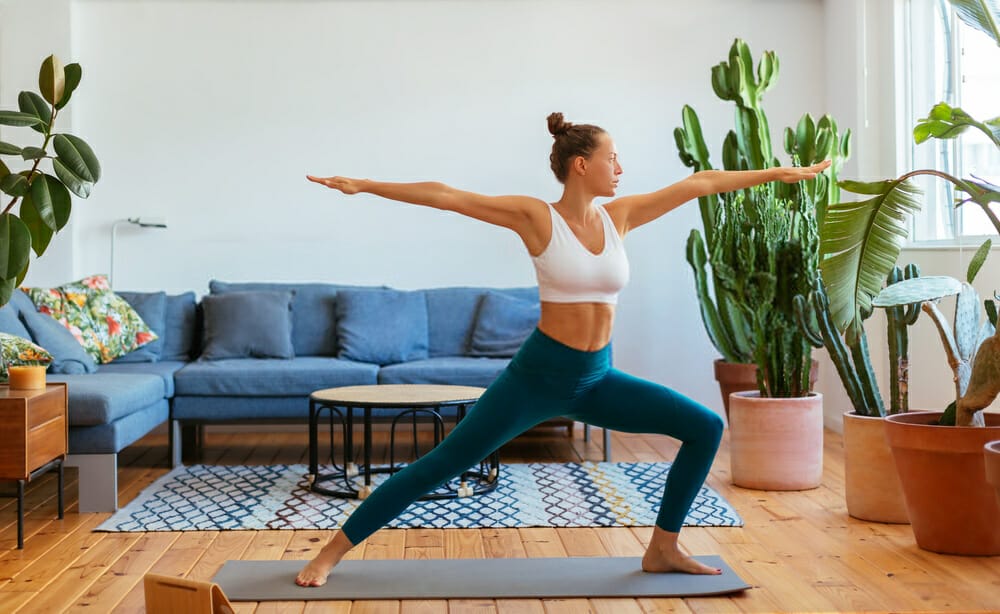
It will be a good option if you're just starting because it provides equipment and movements to help you make the poses more accessible. But, first, let's look at the types of modern yoga.
Restorative Yoga
Restorative yoga is a relaxing practice involving holding yoga poses (asanas) for extended periods while using props such as yoga blocks, blankets, and bolsters.
It is a deep relaxation technique that emphasizes the contemplative part of yoga—the connection of body and mind.
Many of the positions are held relatively effortlessly, thanks to the use of props for support.
A restorative yoga class's goal is to establish the circumstances for peace, allowing individuals to enter a state of deep relaxation and silence.
A therapeutic yoga session may include:
- Soothing music.
- Relaxing pranayama techniques.
- Teachers who offer optional hands-on adjustments or Reiki with consent.
- Extensive use of props.
- Possibly mantra chanting.
This purposefully relaxing atmosphere stands in stark contrast to the hectic pace of modern life and can provide a haven of relaxation and shelter.
Acro Yoga
Acroyoga is a fusion of three different traditions: Yoga, acrobatics, and Thai massage.
It's a variation on partner yoga, but it's a more advanced and in-depth version of it. It incorporates the joyful, forceful, and technical aspects of acrobatics, so there is a lot of lifting your partner, as well as the therapeutic properties of massage.
As we know from our regular yoga practice, the philosophy of yoga entrenched takes it beyond just a physical exercise; it’s more than that.
Jenny Sauer-Klein and Jason Nemer, a dancer and yogi, founded it in the United States in 2003.
Mindfulness Yoga
Mindfulness has long been an essential component of yoga’s physical practice.
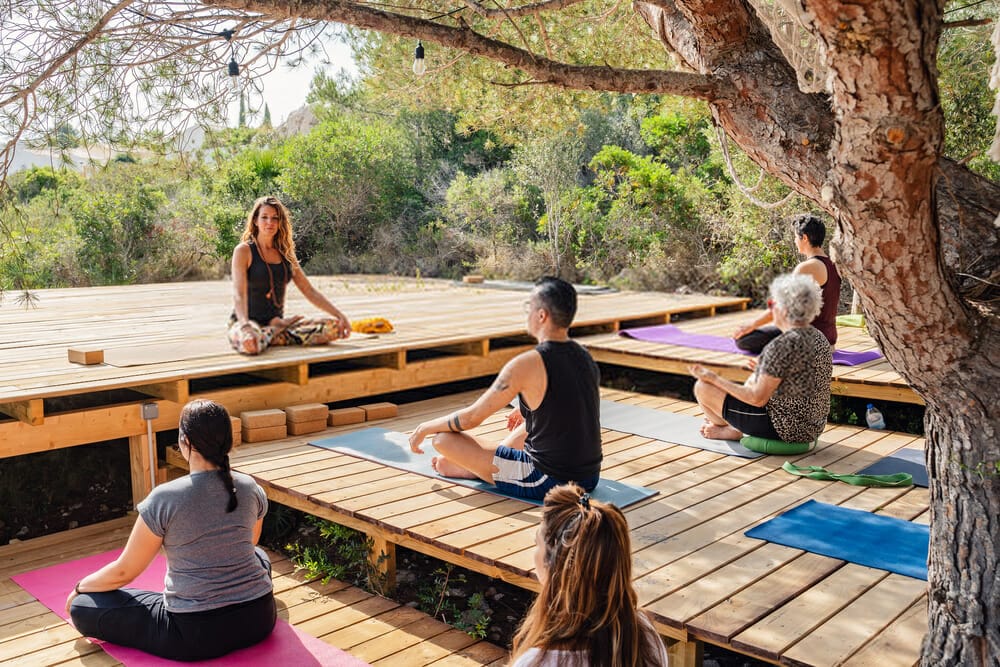
The fundamental distinction between Mindful Yoga and the many other yoga practices is that Mindful Yoga focuses on mind-body awareness rather than alignment details and correct physical posture.
The goal is to cultivate mindfulness while employing asana as a vehicle.
Bringing conscious awareness to any physical activity generates a sharp concentration on whatever you're doing at the time, transforming the movement into a type of meditation.
As a result, mindful yoga is considered a type of meditation, and it is frequently performed before a formal meditation sitting.
Another distinguishing feature of this form of yoga is the emphasis on watching rather than reacting.
Although this should always be the case in yoga, this practice emphasizes observing your mind and sensations while performing the yoga pose.
Yin Yoga
It’s a new technique in which some passive yoga poses are held for an extended period.
Contrary to widespread assumption, Yin Yoga is not from China but rather from the ancient practice of Classical Hatha Yoga, where you need to hold the positions for 3-10 minutes.
It is crucial to understand that monks first practised Hatha Yoga as an austere practice.
However, when gurus such as Swami Sivananda presented Hatha Yoga to the general public, they reduced the duration to 1-3 minutes to make it more accessible to all.
Only passive (yin) positions are employed in Yin Yoga. Muscles are used sparingly, so they are lightly engaged to maintain the posture without extra effort.
Because the positions are held for an extended period, we suggest you use props like pillows, bolsters, and so on.
The poses are also inspired by Hatha Yoga but are given different names to prevent direct identification.
Power Yoga
There are several different types of power yoga. It is a vigorous exercise that helps with flexibility, strength, endurance, coordination, balance, and speed.
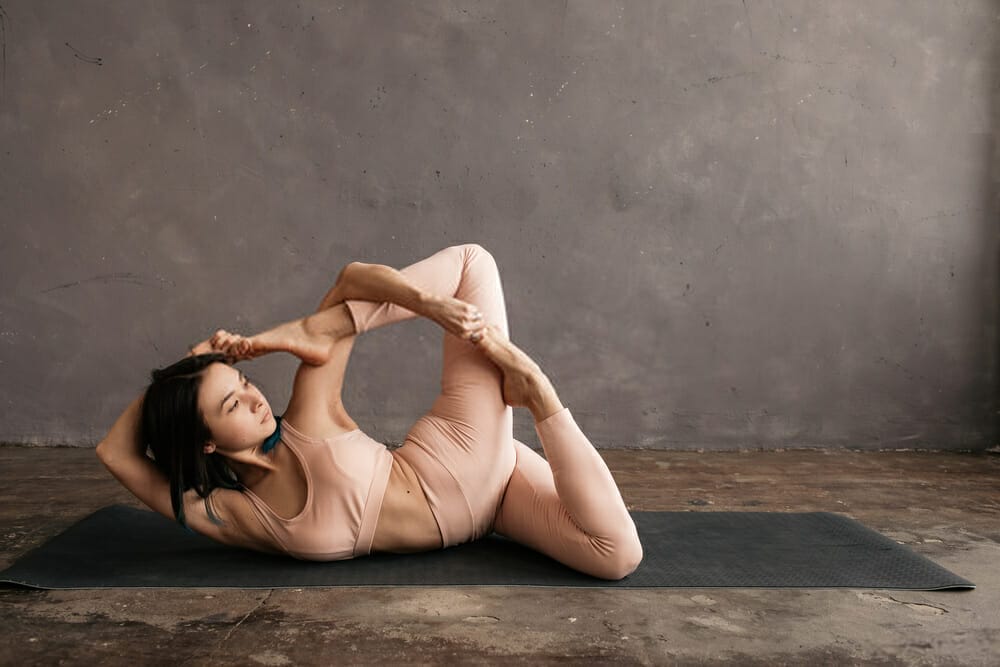
Power yoga classes are designed to meet the needs of anyone interested in improving their fitness level.
There are three different types of power yoga: Vinyasa, Bikram, Ashtanga. Vinyasa is the most popular form of power yoga.
The flow of poses in vinyasa is similar to a typical flowing sequence in a Bikram Yoga class, but it's not as easy for beginners to perform because the poses move at a faster pace.
Bikram Yoga
Bikram Yoga is a branch of Hatha Yoga that originated in the United States in the 1970s by Bikram Choudhury.
Bikram yoga uses a set sequence of 26 postures performed in a heated room between 105 degrees and 115 degrees Fahrenheit.
The workout takes approximately 90 minutes. The postures in Bikram yoga are designed to be challenging.
The primary purpose of the workout is to improve flexibility and muscle tone, but it also improves lung capacity.
The student is also required to chant throughout the workout, which helps with concentration.
Traditional Yoga
It is a traditional way of doing yoga because it’s more like what you would have learned when you started practising.
This type of yoga taught you slowly and focused, with lots of meditation and breathing techniques. Let's look at the types of traditional yoga.
Ashtanga Vinyasa Yoga
Ashtanga Vinyasa yoga is a classic, vigorous, and dynamic style of yoga. When done correctly, it requires an excellent level of attention and concentration, generates an internal heat that cleanses and purifies, builds a strong, supple body, and clears the mind.
Hatha Yoga is a subcategory of Ashtanga Vinyasa Yoga. Asana is the third of Patanjali's eight branches of ashtanga yoga.
As a result, Ashtanga Vinyasa Yoga is a variation on the asana part. This yoga practice has now influenced many other kinds of power yoga.
Hatha Yoga
Hatha Yoga is a form of ashtanga yoga. In ashtanga yoga, the primary purpose was to bring you into a union with the divine, but in hatha, you learn to unite yourself with your soul; that is why it’s a more traditional form.
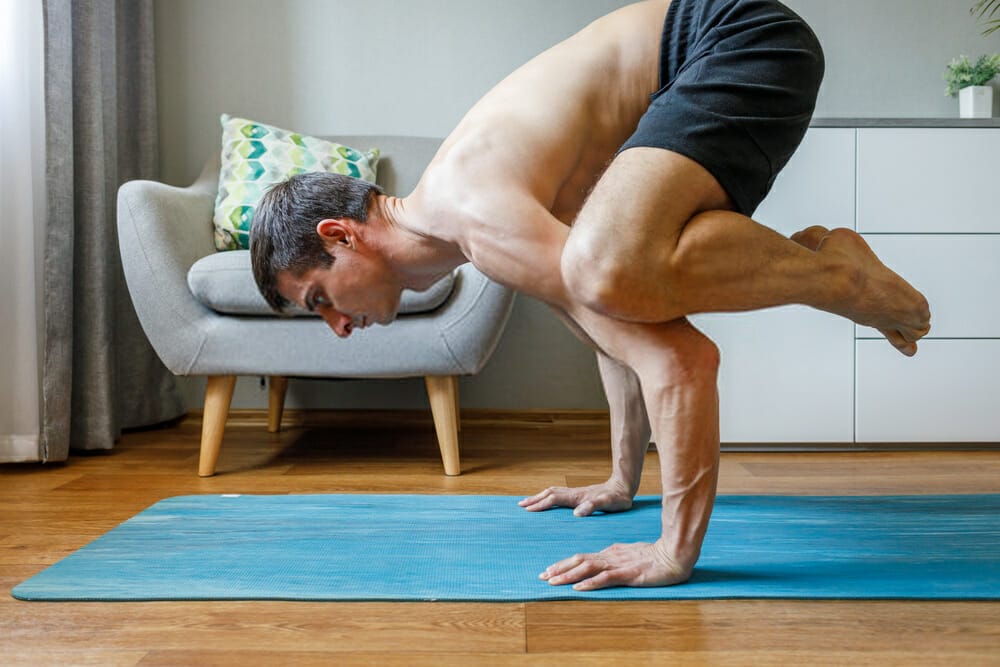
Hatha Yoga encourages a natural stretching and meditation style of yoga that helps to slow down your breath and balance your body.
This type of yoga can provide an individual with instant relaxation, even if they have been stressed out all day.
Kriya Yoga
Kriya Yoga is an ancient meditation practice that is also a component of a broader spiritual journey.
It is a powerful approach that works directly with the source of growth - the spiritual force that resides deep inside our spines.
It assists the practitioner in controlling the life energy by bringing it up and down the spine with awareness and will.
According to Yogananda, one kriya, which takes roughly a half-minute, is comparable to one year of spontaneous spiritual progress.
For generations, the ancient technique of Kriya Yoga was kept secret. However, it was revitalized in 1861 when the great yogi Mahavatar Babaji taught the technique to his follower Lahiri Mahasaya in the Himalayas.
Sivananda Yoga
Sivananda Yoga derives from Swami Sivananda’s tradition, as presented to the west by his student Swami Vishnudevananda in the late 1950s.
The Sivananda technique is based on Vishnudevananda's five principles for good health and spiritual progress.
They are as follows:
- Exercising properly (Asana, focusing on twelve poses in particular)
- Breathing correctly (Pranayama)
- Relaxation (Savasana)
- Diet (Vegetarian)
- Meditation (Dhyana)
- positive thinking (Vedanta)
Iyenger Yoga
Yogacharya B.K.S. Iyengar founded and developed the Iyengar Yoga system more than 75 years ago. Iyengar Yoga is suitable for people of all ages and body kinds.
It emphasizes precision and timing and the usage of props devised by Mr Iyengar to assist practitioners in achieving perfection in any asana.
Regular Iyengar Yoga practice unites the body, mind, and emotions. It helps to stimulate the body’s natural healing mechanisms.
Kundalini Yoga
Kundalini yoga is a synthesis of Bhakti, Raja, and Shakti yoga. Kundalini yoga aims to give a method for people to realize their full creative potential, release themselves from Karma (the long-term consequences of past acts), and discover their life purpose.
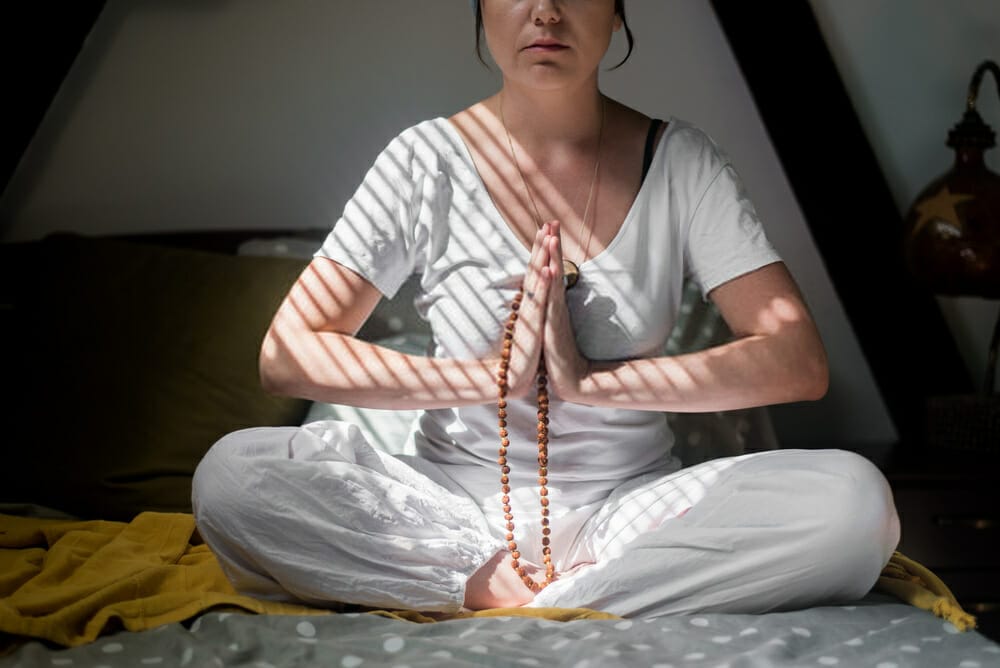
Yogi Bhajan, a yoga teacher from Pakistan, is most closely linked with Kundalini yoga. In the 1960s, he was acclaimed for bringing the practice to Western countries.
“Kundalini” is derived from the Sanskrit word “kundal,” which means “round.” It also refers to a coiled snake.
It leads to spiritual enlightenment with constant practice. Hence, it is referred to as a "Kundalini awakening."
Laya Yoga
Laya is a Sanskrit word that means “dissolve.” Laya yoga leads to Samadhi, which is the most significant state of union with the divine.
It takes the mind from the form of manifestation and dissolution to the state of moola Prakriti, which means "original state."
Though it is also known as Kundalini yoga because it awakens the kundalini strength, Laya yoga operates from the top of the body’s Sahasrara (crown chakra). It flows down through the lower chakras to awaken kundalini.
Laya's yoga practice aims to raise the conscious level of the mind to a higher degree by training the mind to listen to the inner sound. Laya yoga practise involves asanas, pranayama, mudras, mantras, and bandha.
Conclusion
Yoga is a practice that has been around for as long as the written word. It has helped many people worldwide keep a healthy and balanced lifestyle, and it continues to improve the health of many people today.
Yoga helps you to connect yourself with your true self and develop a connection with the universe.
So if you are looking for peace of mind, better balance in your life, or an overall healthy lifestyle, yoga can help!
I hope this article gave you all the information you need about yoga. Also, I hope you enjoy yoga as much as I do!
Happy Yoga!


